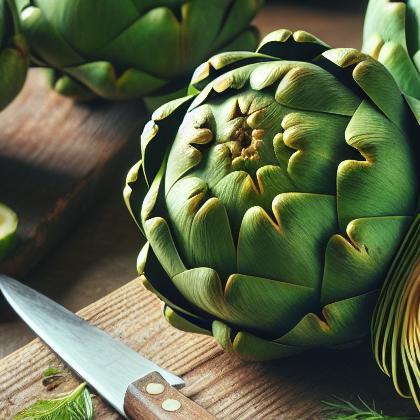Showing results for 'Artichokes'
close
Artichokes

The globe artichoke (Cynara cardunculus var. scolymus) is a variety of a species of thistle cultivated as a food. The edible portion of the plant consists of the flower buds before the flowers come into bloom. The budding artichoke flower-head is a cluster of many budding small flowers (an inflorescence) together with many bracts, on an edible base. Once the buds bloom the structure changes to a coarse, barely edible form. The uncultivated or wild variety of the species is called a cardoon. It is a perennial plant native to the Mediterranean region.
Artichokes Pairs With:
Food Item
Flavor Affinity Level

Did you know there are 210 food flavor pairings in my database for Artichokes available. What you are seeing above is a random list of 30 items which pair with Artichokes.
For the entire list, beautifully formatted, enter your email address and click the download button below, then I'll email it to you as a PDF.
Artichokes Properties:
| Food Property | Type | Description |
|---|---|---|
| Flavor Profile | Bitter | Artichokes have a slightly bitter taste due to the presence of cynarin. |
| Texture | Firmness | Artichokes have a firm texture, especially the heart and base. |
| Nutritional Value | Fiber | Artichokes are high in fiber, which aids in digestion and helps maintain a healthy gut. |
| Color | Natural Pigments | Artichokes contain natural pigments that give them their green color, such as chlorophyll. |
| Aroma | Volatile Compounds | Artichokes contain volatile compounds that contribute to their distinct aroma when cooked. |
| Chemical Composition | Acidity/Alkalinity (pH) | Artichokes have a slightly acidic pH level. |
| Cooking Behavior | Water Retention | Artichokes have a tendency to retain water when cooked, resulting in a moist texture. |
Food Pairing App - Version 1.2.0
